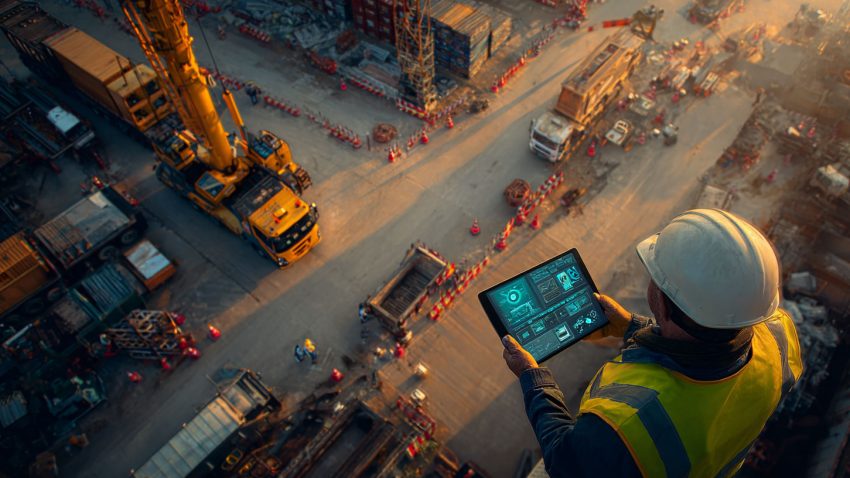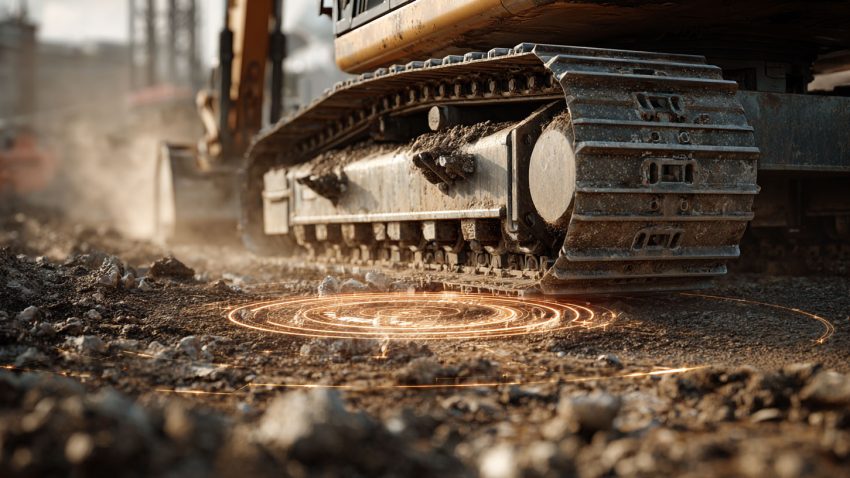Construction Safety 10: The Key to Keeping Construction Sites Safe, Clean, and Orderly.
Table of Contents:

A safe, clean, and orderly construction site is not only a fundamental requirement for successful construction projects but also a hallmark of a responsible and professional company. Prioritizing the well-being of workers, preventing accidents, and fostering a productive work environment are key aspects of an efficiently managed site. Moreover, a well-organized construction site contributes significantly to the timely completion of projects, ensuring that deadlines are met and client expectations are exceeded.
In today’s fast-paced and competitive construction industry, maintaining a pristine and orderly site can be a challenging task. With numerous activities happening simultaneously, and workers constantly moving around, it is easy for sites to become cluttered, disorganized, and potentially hazardous. However, by adopting a proactive approach and implementing effective management strategies, you can create a construction site that is not only safe and clean but also optimally organized for maximum productivity.
In this comprehensive guide, we delve into essential tips and best practices to help you transform your construction site into a shining example of safety, cleanliness, and efficiency. We will discuss the importance of developing a comprehensive site safety plan, providing adequate training, and implementing a robust waste management system. Additionally, we will explore the value of conducting regular site inspections, enforcing strict housekeeping rules, and establishing clear access routes for vehicles, equipment, and pedestrians.
We will also emphasize the significance of providing personal protective equipment (PPE) to workers and promoting a culture of open communication, where employees feel comfortable reporting hazards, accidents, or unsafe conditions. Furthermore, we will highlight the importance of continuously reviewing and adapting your safety protocols, cleanliness standards, and site organization strategies to ensure they remain effective and relevant.
By implementing the tips shared in this guide, you can create a safe, clean, and orderly construction site that not only protects worker health and minimizes risks but also enhances productivity and efficiency. In turn, this will reflect positively on your company’s reputation, bolstering your standing as a reliable and professional contractor. So, without further ado, let’s dive into the world of construction site safety, cleanliness, and organization, and embark on a journey towards excellence and unparalleled project success.
Develop a Comprehensive Site Safety Plan
Before commencing any construction work, it is crucial to develop a detailed site safety plan. This plan should outline the safety protocols, emergency response procedures, and communication channels for all team members. Regularly review and update the plan as needed to address new hazards and evolving project requirements.
Provide Adequate Training
Educate your workers on the importance of safety measures, cleanliness, and organization. Offer regular training sessions on proper equipment usage, hazard identification, and waste management. Empowering workers with the knowledge and skills to maintain a safe and orderly workplace is key to preventing accidents and ensuring smooth operations.
Implement a Waste Management System
A well-structured waste management system is essential for keeping construction sites clean and organized. Provide designated waste disposal areas, recycling bins, and regular waste collection services. Encourage workers to dispose of waste responsibly and recycle materials whenever possible.
Schedule Regular Site Inspections
Conduct routine site inspections to identify potential hazards, assess cleanliness, and evaluate the overall organization of the construction site. Use these inspections as an opportunity to address any concerns and ensure that safety standards and site maintenance protocols are consistently upheld.
Enforce Strict Housekeeping Rules
Implement strict housekeeping rules to maintain a clean and organized construction site. Encourage workers to clean up after themselves, put tools and equipment away after use, and promptly address spills or other hazards. Clear walkways and work areas of debris to minimize the risk of slips, trips, and falls.
Use Appropriate Signage and Barricades
Clearly mark hazardous areas, restricted zones, and potential safety risks with appropriate signage and barricades. This helps workers and visitors navigate the site safely and avoid potential dangers.
Establish Clear Access Routes
Create well-defined access routes for vehicles, equipment, and pedestrians to minimize traffic congestion and prevent accidents on-site. Ensure these routes are regularly maintained and free of obstacles to promote safe and efficient movement.
Provide Personal Protective Equipment (PPE)
Supply workers with the necessary PPE, such as hard hats, safety glasses, gloves, and high-visibility vests. Regularly inspect and replace PPE as needed, and ensure all workers are trained in the proper use and maintenance of their protective gear.
Encourage Open Communication
Promote a culture of open communication where workers feel comfortable reporting hazards, accidents, or unsafe conditions. Foster a blame-free environment that encourages workers to take responsibility for their actions and prioritize safety above all else.
Review and Adapt
Continuously assess the effectiveness of your safety protocols, cleanliness standards, and site organization strategies. Seek feedback from workers and make adjustments as needed to ensure continuous improvement.
By implementing these tips, you can create a safe, clean, and orderly construction site that promotes worker well-being, prevents accidents, and fosters a productive work environment. A well-maintained site not only reflects your company’s commitment to safety and professionalism but also contributes to the overall success of your construction projects.
Top Benefits of Construction Safety Management Software
- Enhanced Compliance Monitoring Construction management software helps superintendents ensure that all safety protocols are followed by providing real-time tracking and automated workflows. This reduces the likelihood of human error and ensures that all necessary documentation is completed accurately and on time.
- Proactive Hazard Identification Real-time reporting tools enable superintendents to quickly identify and address safety hazards on the jobsite. This proactive approach helps in mitigating risks before they lead to accidents, ensuring a safer working environment for everyone involved.
- Streamlined Safety Training Construction management software can automate safety training schedules and track the completion of training programs. This ensures that all workers are properly trained and certified, reducing the risk of accidents due to inadequate training.
- Improved Communication Integrated communication tools enhance collaboration among team members, ensuring that safety information is shared quickly and effectively. Superintendents can use these tools to disseminate safety updates, conduct safety meetings, and ensure everyone is informed about safety protocols.
- Accurate Documentation Digital forms and automated reporting ensure that all safety-related documentation is accurate and up-to-date. This reduces the risk of missing or incomplete records, which can lead to compliance issues and increased liability.
- Reduced Incidents and Accidents By proactively managing safety and ensuring compliance with all protocols, construction management software helps in reducing the number of incidents and accidents on the jobsite. This not only improves safety but also enhances overall project efficiency.
- Efficient Emergency Response Emergency management features in construction software allow for quick and efficient response to accidents or incidents. Superintendents can use these tools to coordinate emergency responses, track incident reports, and implement corrective actions promptly.
- Enhanced Safety Audits Automated safety audits help superintendents conduct thorough inspections of the jobsite, identifying potential risks and ensuring compliance with safety standards. These audits provide detailed reports that can be used to continuously improve safety practices.
- Better Worker Morale A safe working environment boosts worker morale and productivity. By using construction management software to enhance jobsite safety, superintendents can create a positive work environment that encourages workers to perform at their best.
- Cost Savings Reducing accidents and improving safety compliance can lead to significant cost savings. Superintendents can avoid costly fines, reduce downtime due to accidents, and lower insurance premiums by maintaining a safe and compliant jobsite.
Top Features or Applications of Safety Management Software for Superintendents
- Digital Safety Forms Digital safety forms replace traditional paper forms, making it easier to manage inspections, safety reports, and daily logs. These forms can be customized to meet specific project needs and are accessible from any device, ensuring real-time data entry and accuracy.
- Automated Safety Inspections Automated safety inspections streamline the process of conducting safety audits on the jobsite. Superintendents can schedule regular inspections, track completion, and generate detailed reports that highlight potential risks and compliance issues.
- Real-Time Reporting Real-time reporting tools enable superintendents to document safety incidents and hazards as they occur. This immediate reporting allows for quick response and corrective actions, minimizing the impact of safety issues.
- Permit Tracking Permit tracking features ensure that all necessary permits and certifications are in place for workers and subcontractors. This helps superintendents comply with regulatory requirements and ensures that only qualified personnel are allowed on the jobsite.
- Incident Management Incident management tools provide a systematic approach to documenting and responding to safety incidents. Superintendents can use these tools to log incidents, track investigations, and implement corrective actions to prevent future occurrences.
- Safety Training Management Construction management software can automate the scheduling and tracking of safety training programs. This ensures that all workers receive the necessary training and certifications, reducing the risk of accidents due to inadequate training.
- Hazard Identification Hazard identification features help superintendents proactively identify and mitigate potential risks on the jobsite. These tools use data analytics and reporting to highlight areas of concern and recommend corrective actions.
- Compliance Monitoring Compliance monitoring tools ensure that all safety protocols and regulations are followed on the jobsite. Superintendents can use these tools to track compliance, conduct audits, and generate reports that demonstrate adherence to safety standards.
- Emergency Response Coordination Emergency response coordination features enable superintendents to quickly and efficiently manage emergencies on the jobsite. These tools provide real-time communication and coordination capabilities, ensuring a swift and effective response to incidents.
- Safety Analytics and Reporting Safety analytics and reporting tools provide detailed insights into safety performance on the jobsite. Superintendents can use these tools to track safety metrics, identify trends, and implement improvements to enhance overall safety.
FAQs
How does construction management software improve safety compliance for superintendents?
Construction management software significantly enhances safety compliance by providing digital safety forms, automated safety inspections, and real-time reporting features. For superintendents, this means they can quickly and easily document safety protocols, track compliance, and address any safety issues promptly. The software allows for the integration of safety checklists and permits tracking, ensuring that all safety measures are adhered to and that all workers have the necessary training and certifications. This systematic approach not only helps in maintaining a safe jobsite but also in reducing the risk of accidents and improving overall project efficiency.
What features should superintendents look for in resource management software?
Superintendents should look for several key features in resource management software to ensure optimal resource utilization. Essential features include automated resource scheduling, which helps in planning and allocating resources efficiently. Real-time inventory tracking is crucial for monitoring the availability of materials and equipment, ensuring that there are no shortages or delays. Additionally, labor tracking and reporting tools allow superintendents to monitor workforce productivity and make informed decisions about labor allocation. Integration with other project management tools is also important for seamless data flow and comprehensive project oversight. These features collectively enhance resource management, reduce waste, and improve project outcomes.
How can construction management software help superintendents ensure projects stay on schedule?
Construction management software helps superintendents ensure that projects stay on schedule by providing advanced scheduling tools. These tools include task dependencies, which help in planning the sequence of operations, and milestone tracking, which provides checkpoints to monitor progress. Automatic notifications keep all team members informed of any schedule changes, ensuring everyone is aligned with the project timeline. Integration with other project management tools allows for seamless data synchronization, making it easier to track and adjust schedules in real-time. By using these features, superintendents can anticipate potential delays, adjust schedules proactively, and ensure timely project completion.
What are the benefits of using digital forms in construction management for superintendents?
Using digital forms in construction management offers several benefits for superintendents. Digital forms streamline inspections, safety reporting, and daily logs, making it easier to keep accurate records and comply with regulations. They enhance documentation accuracy by reducing errors and ensuring that all necessary forms are completed on time. Real-time data entry allows superintendents to access up-to-date information from any device, improving decision-making and project oversight. Additionally, digital forms facilitate better communication and collaboration among team members, as information can be shared quickly and efficiently. Overall, digital forms improve efficiency, accuracy, and compliance in construction management.
How does delivery management software benefit superintendents in construction projects?
Delivery management software provides significant benefits for superintendents by streamlining the logistics and tracking of materials and equipment deliveries. Automated delivery scheduling ensures that all necessary resources are ordered and delivered on time, reducing the risk of project delays due to late or missing materials. Real-time tracking allows superintendents to monitor the status of deliveries, providing visibility into when and where materials will arrive. This visibility helps in planning and coordinating site activities, ensuring that the project progresses smoothly. Integration with other project management tools ensures seamless communication and data sharing, enhancing overall project efficiency. By using delivery management software, superintendents can better manage site logistics, reduce delays, and ensure timely and accurate deliveries, ultimately improving project outcomes.
By leveraging comprehensive construction management software, superintendents can improve safety, optimize resource management, enhance scheduling, streamline documentation, and manage deliveries more efficiently. These tools and best practices ensure that construction projects are completed on time, within budget, and to the highest standards of quality and safety.
StruxHub enhances efficiency and coordination across all project phases, providing a single source of truth that eliminates silos and fosters collaboration. Real-time updates, financial management tools, and seamless commvunication features ensure that all team members and stakeholders are aligned and informed, reducing the risk of errors and delays. With comprehensive solutions for document management, risk mitigation, and quality control, StruxHub maintains project integrity and safety, while mobile access and integration capabilities further enhance project flexibility and efficiency.
StruxHub’s Key Features and Benefits:
- Advanced Delivery Management: Automate and optimize your delivery schedules, ensuring materials arrive just in time, every time.
- Site Communication: Utilize georeferenced maps and instant messaging to keep every team member informed and aligned.
- Construction Materials Management: Track inventory levels and manage materials procurement with ease, reducing waste and avoiding project delays.
- Construction Safety & Inspection Workflows: Implement customizable mobile forms for conducting safety inspections and managing compliance documentation effortlessly.
- Short-Term Scheduling: Visualize project tasks with detailed floor plans, linking each activity to specific locations for better planning accuracy.
- Construction Resource Management: Efficiently allocate personnel and equipment, maximizing productivity and reducing idle time.
StruxHub’s Product Offering:
- StruxHub Deliveries: Simplifies the coordination of incoming deliveries, ensuring materials and equipment are precisely timed to project needs.
- StruxHub Logistics: Offers intelligent site logistics planning, from crane scheduling to space allocation, for smoother operations.
- StruxHub Safety: Elevates on-site safety standards with easy-to-use tools for inspections, permits, and incident reporting.
- StruxHub Scheduling: Enhances project timelines with intuitive scheduling tools that ensure tasks are completed efficiently and on time.
With StruxHub, construction companies can look forward to a streamlined, more efficient project execution that delivers on time and within budget. Embrace the power of innovation and take your construction projects to the next level.
Don’t miss out on the opportunity to optimize your construction management processes with StruxHub. Sign up for a free demo today. Let’s build smarter, together.
Related Articles
Construction Safety
- 10 Ways to Keep Your Construction Team Up-to-Date in the Field
- Construction Safety: How to Reduce Jobsite Accidents with Effective Sub and Safety Tracking Using StruxHub Permit
- Construction Safety Management Workflows are a Leading Source of Inefficiency – Here’s How to Fix It with StruxHub Permit
- Construction Safety: The Key to Keeping Construction Sites Safe, Clean, and Orderly


